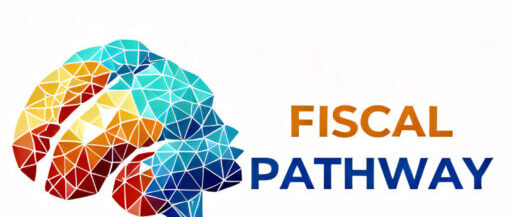The modern corporate environment is changing quickly, and customers have never had higher expectations. Customers increasingly expect more seamless, customized, and responsive experiences, driven by increased competition, digital channel proliferation, and technological developments.
For businesses to be competitive and retain client loyalty, they must adjust to these changing demands across all industries. This article explores the elements that are causing consumer expectations to rise, how these expectations are affecting different industries, and how firms might meet and beyond these expectations.
Understanding the Rise in Customer Expectations
Customer expectations are rising due to a number of factors:
1. Technological Advancements: The quick development of technology has changed the way customers engage with companies. Customers now demand quick, effective, and customized interactions due to the rapid advancements in artificial intelligence (AI), smartphones, and high-speed internet.
2. Digital Experience: New benchmarks for customer experience have been established by the success of tech behemoths like Google, Amazon, and Netflix. By providing individualized suggestions, frictionless transactions, and outstanding service, these businesses have elevated the standard and established a standard that customers now use in all of their interactions.
3. Increased Access to Information: Customers are better equipped to make educated selections because to the wealth of information that is readily available online. Customers who have easy access to reviews, comparisons, and other alternatives demand openness and excellence from companies.
4. Social Media Influence: The voices and demands of customers have been magnified by social media platforms. Both positive and bad reviews go fast, and companies are always being watched. Consumers today anticipate timely and efficient resolutions to their issues in addition to superior goods and services.
5. Global Competition: There is now more rivalry due to the global marketplace. Companies now face competition from both domestic and foreign competitors in addition to those in their own marketplaces. The necessity to satisfy a wide range of more demanding customers is fueled by this increased competition.
The Impact on Various Sectors
Different industries are impacted by rising customer demands in different ways:
1. Retail: Customers expect a smooth, integrated online and offline experience when they shop at retail establishments. Features like quick returns and exchanges, tailored suggestions based on browsing history, and real-time inventory updates are examples of this. Additionally, retailers need to offer prompt and dependable customer support, such as chat assistance and alternatives for expedited shipment.
2. Financial Services: Customers want more security, more transparency, and more individualized financial guidance from financial organizations. With the growth of fintech, cutting-edge solutions like AI-driven investment suggestions, real-time transaction notifications, and mobile banking applications have become available. Consumers anticipate efficient financial services that are also customized to meet their requirements and objectives.
3. Healthcare: Patients now anticipate a more patient-centered experience in the healthcare system. Patients want prompt information access, individualized treatment, and digital technologies that make it easier to communicate with medical professionals. In today’s healthcare environment, telemedicine, electronic health records, and patient portals are becoming routine features.
4. Hospitality and Travel: Personalized experiences and easy booking procedures are key components of the sectors’ newfound demands. Consumers anticipate personalized trip suggestions, real-time booking updates, and top-notch customer support all along the way. AI and data analytics integration is being utilized more and more to improve visitor experiences and optimize workflows.
5.Technology and Software: Consumers in the technology sector want constant innovation, frequent upgrades, and helpful assistance. In order to quickly resolve technical difficulties, software businesses need to give user-friendly products, timely patches and upgrades, and strong customer service.
Strategies for Meeting Increased Customer Expectations
Businesses can use a variety of tactics to meet and surpass the increasing expectations of their customers:
1. Leverage Data Analytics: Businesses may better understand consumer preferences, habits, and pain areas by utilizing data analytics. Businesses may provide individualized experiences, foresee requirements, and modify their offers to meet consumer expectations by evaluating customer data. Putting sophisticated analytics tools and customer relationship management (CRM) systems into practice may yield insightful information that improves client interactions.
2. Embrace Omnichannel Strategies: Using an omnichannel strategy guarantees a consistent consumer experience at every point of contact. It is recommended that businesses combine their offline and online channels to facilitate seamless client transitions between them. For instance, a consumer may begin their online buying adventure and finish it in-store, all the while anticipating a unified experience.
3.Enhance Customer Service: Fulfilling rising expectations requires providing exceptional customer service. Companies should spend money on educating employees to deal with questions and grievances in an efficient manner, use chatbots driven by AI to provide quick support, and provide a variety of contact options, such as phone, email, and live chat.
4. Invest in Technology: Fulfilling client expectations requires keeping up with technology developments. To increase productivity, customize communications, and improve customer experiences, businesses should investigate automation, machine learning, and artificial intelligence. Predictive analytics is one example of a technology that might assist anticipate client demands and offering proactive answers.
5. Foster Transparency and Trust: Transparency in pricing, communication, and company procedures is essential to gaining the trust of consumers. Companies should guarantee data security and privacy, answer freely to consumer complaints, and give clear information about their goods and services. In order to satisfy customers’ expectations and promote enduring loyalty, trust is essential.
6. Solicit and Act on Feedback: Consistently asking for and responding to customer input shows a dedication to fulfilling their requirements. To get information and make changes, businesses should use feedback channels like questionnaires, evaluations, and focus groups. Resolving client complaints as soon as possible can increase satisfaction and loyalty.
7. Personalize Experiences: Customization is an effective strategy for satisfying client demands. Businesses may establish more relevant and engaging encounters by providing individualized messages, customized promotions, and tailored suggestions. Delivering highly tailored experiences that connect with individual clients may be facilitated by utilizing data and AI.
8. Enhance Speed and Efficiency: Clients are expecting faster and more effective service. To provide quicker answers and remedies, businesses can improve their operations, cut down on wait times, and simplify their procedures. Improved processes and the use of automation may both lead to increased productivity and efficiency.
Conclusion
Growing consumer expectations are changing the way businesses operate and necessitating increased efficiency, responsiveness, and customization. Companies in all industries need to adjust to these changing needs by putting a premium on outstanding customer service, utilizing technology, and adopting omnichannel strategies.
Businesses may gain a competitive edge in an increasingly demanding economy, improve customer happiness, and foster trust by comprehending and satisfying heightened expectations. Those who thrive at providing seamless, tailored experiences to customers will be best positioned for success in the contemporary corporate climate as those expectations only grow.
FAQs on Managing Customer Expectations
How do I effectively manage customer expectations?
Keep everyone informed, communicate effectively, and establish reasonable deadlines. Analyze customer data to learn about their wants and requirements.
How do you surpass customer expectations?
Always go above and beyond customer expectations, provide personalized experiences, and answer enquiries promptly. Use comments as a springboard for further development.
Which 5 key variables influence customer expectations?
- Recent developments in technology
- The standard of online interactions
- Easy access to data
- The impact of social media
- Global competition




